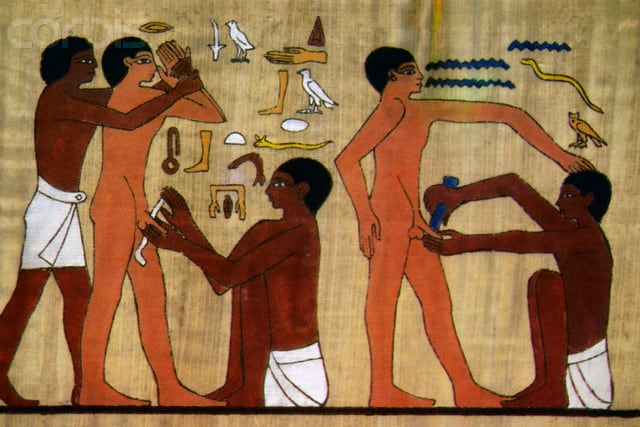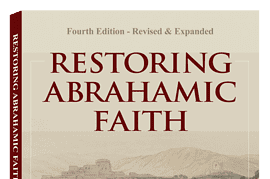The earliest mention of the practice of circumcision in the Bible is in the book of Genesis, chapter 17:10 “This is my covenant with you shall keep, between me and you and your descendants after you; Every male among you shall be circumcised.”Most scholars of the Hebrew Bible assign this chapter to the so-called “Priestly source” of the Torah. Subsequent references to a literal circumcision of the foreskin of the male penis are also all from this Priestly source (e.g. Gen 21:4; 34:15ff; Exodus 12:44ff; Lev 12:3). In contrast, in the covenant initiated with Abraham in Genesis 15, circumcision is not mentioned. The entire book of Deuteronomy only mentions circumcision as a “spiritual” rite of the heart–connected to a passionate love of God–and this notion is echoed in the Prophets (Deut 10:16; 30:6; Jeremiah 4:4).
According to this priestly tradition circumcision became a “sign” of the covenant between God and the extended family of Abraham. The text tells us that on the very day Abraham was told of this new practice he circumcised not only his firstborn son Ishmael–but the males of his entire household–which numbered 318 according to Genesis 14:14. Isaac, born a year later, is circumcised as an eight-day-old infant (Genesis 21:4). Strangely, according to Exodus 4:24-26, Moses apparently neglected to circumcise his firstborn son and suffered the displeasure of God–who tried to chase him down and kill him–as well as that of his wife Zipporah. Also, during the entire 40 year desert wandering of the Israelites in the time of Moses neither circumcision or observance of Passover was practiced according to the book of Joshua. (Joshua 5:2-12).
Many are surprised to learn that some form of this rite was practiced by various Ancient Near Eastern cultures, including the Egyptians and many tribes in Africa. Josephus, following Herodotus, notes that the Egyptians, the Ethiopians, the Syrians, and the Phoenicians, all practiced circumcision (Antiquities 8:262).
In the case of the Egyptians we have some fascinating illustrations of the process that began long before the time of Moses. In Saqqara, in Ankhmahon’s tomb, Visir of the Pharaoh Teti Dynasty (c. 2345 BCE) there is a bas-relief with a representation of circumcision. Below is a papyrus illustrating the operation in vivid color.

The hieroglyphics illustrate the dialogue:
“Hold it, quickly, don’t let it fall”
he answers
“I’ll do as you want”.
On the right, instead, the patient says:
“Rub it well, to make it efficacious”
and the operator answers:
“I’ll make it painless, pleasant”.
These last sentences let us suppose that the object in the operator’s hands, on the right, had an anesthetic use, others affirm that it is a sharp tool and that the word “rub” refers to the sharpening. Apparently circumcision was some kind of ritual marker connected to puberty and perhaps participation in priestly or royal levels of the society.









Comments are closed.